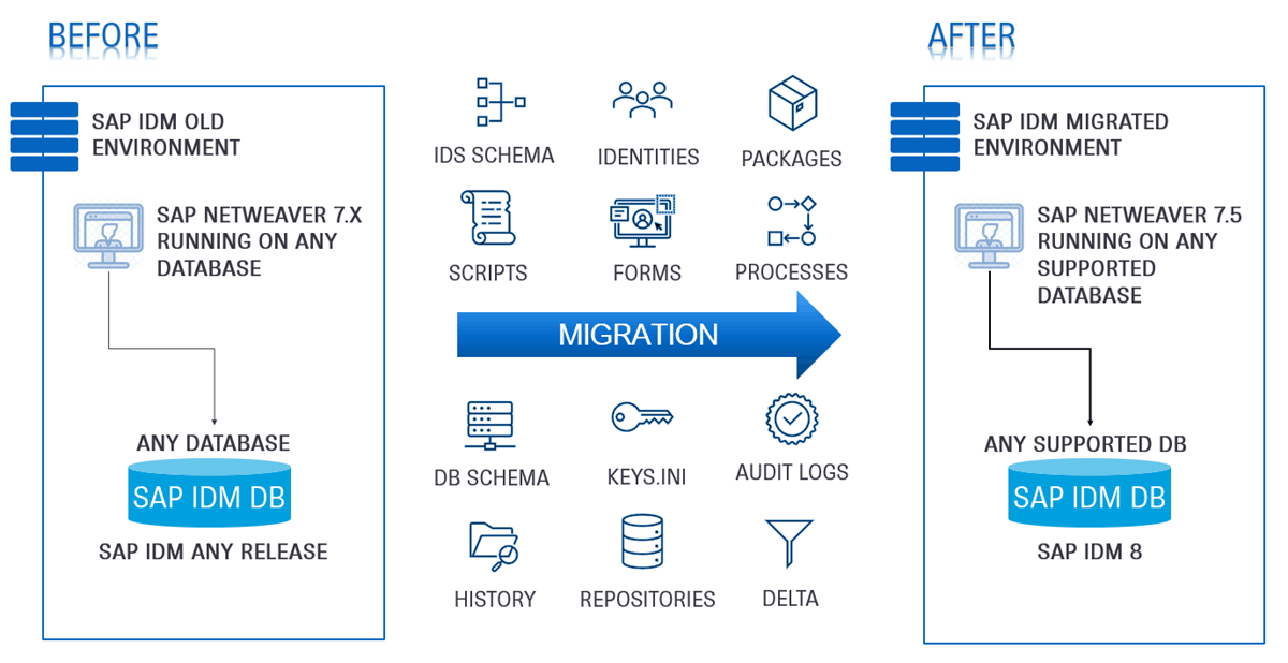We run the migration always using the productive system (PROD) as a template/single source of truth. With our approach the data from PROD is moved to a separate storage (e.g. sandbox) and from there we perform the first migration cycle, which builds up the new development system (DEV) of the customer. There we perform the needed tests and verification before moving to the next system in the landscape. If there is a quality system (QA), then it is again migrated from the production template, but this time, it is the customer who tests the results of the migration. In case the landscape consists of only two systems - DEV and PROD, then DEV is reverted to a clean state - e.g. clean IdM and NW install, and then the migration is repeated while again asking the customer to verify the results of the migration on the new landscape.
Only once the customer tests are completed successfully, we move to the real production system migration. Here we offer two options – full single load and delta historical load.
The full single load might require a longer downtime of PROD depending on its size and complexity. However, it is the simpler approach after which the new system is fully ready to be used as before without any limitations.
The delta historical load approach requires less downtime of PROD (within the typical timeframe of a weekend) since it transfers initially only the current and future-related data for all identities, repositories, approvals etc. This is the data that is mandatory for the system to operate properly. The rest of the data (e.g. historical data, audit logs, etc.) is transferred gradually over time in proper slots of no or low activity in the system. The complexity here is higher, but if the latter type of data is not critical to be available on the first day of the Go-live, then it might be the proper way for some companies.
One of the additional benefits achieved with the migration is that all IdM systems in the landscape are equalized in terms of configuration. Production data stays only in PROD while all other systems (e.g. DEV and QA) are wiped clean of it. DEV and QA can load their data from the repositories dedicated for them. In the meantime, the old landscape can be used without any limitations. Once the new landscape is ready for Go-live, the old one can be shut down. Newly developed packages that were not transported to PROD before the migration, if any, can be exported from the old and imported in the new environment, thus fully equalizing them.
A bonus benefit for all companies that go with our migration package is the full audit we will perform to their existing system. Performing in-depth analysis before the project starts is an important prerequisite in order to assess the variable of the migration, e.g. the percentage of custom scripts, the volume of data, etc. You can join the list of our successfully migrated SAP IdM customers by clicking on the button below and filling out our questionnaire.

